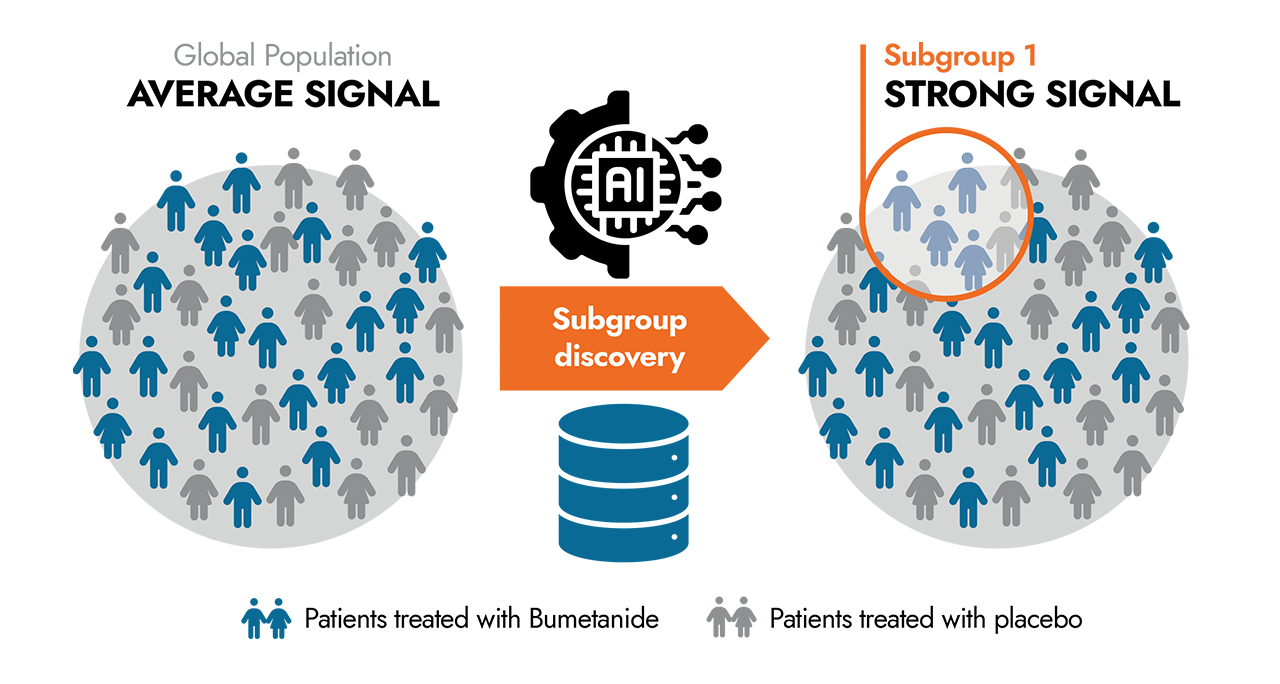Towards Targeted and Personalized Medicine!
Before implementing a medical treatment, a multi-phase clinical trial is required to assess potential side effects as well as the efficacy of the drug by comparing a treated group to a placebo group. These standardized clinical studies are conducted on diverse populations, and their success depends on meeting strict validation criteria at the population level.
However, recognizing the variability in treatment responses is essential for advancing towards more precise and effective medicine. AI is proving to be a powerful ally in this pursuit, transforming data into tools for personalized clinical decision-making. While AI integration in medical practice is still in its early stages, the prospects are highly promising. As technology advances and new data sources are incorporated, we can expect increasingly personalized medicine, enabling truly tailored patient care.
The Context
In the medical field, one fundamental observation stands out: each individual is unique. This uniqueness is reflected not only in our physical and genetic characteristics but also in how we respond to diseases and treatments. It is crucial to acknowledge that pathologies vary from person to person, making treatment responses equally heterogeneous. Traditional medical treatments often follow a standardized approach based on clinical trials conducted on diverse populations. However, this method frequently overlooks individual variations. As a result, the benefits of a drug that might be highly effective for a minority of patients can be diluted in the conclusions drawn from the general population. This disparity can stem from various factors, such as genetic differences, environmental influences, lifestyle, or even comorbidities.
Artificial intelligence (AI), with its ability to analyze vast and complex datasets, presents an unprecedented opportunity to personalize medical care. By integrating diverse data sources, including an individual’s lifestyle, medical history, health test results over time, and other relevant factors, AI can identify patterns and correlations that would otherwise remain invisible to the human eye. One of AI’s key strengths lies in predicting treatment responses. For instance, algorithms can be trained to analyze patient profiles and predict their likelihood of responding positively to a specific treatment. Additionally, AI can help identify patterns that characterize subgroups of individuals who may benefit from a given therapy.
A concrete example of applying these new technologies to overcome the limitations of standardized clinical trials can be seen in the analysis conducted by our team following Phase 3 of a clinical trial evaluating the efficacy of a treatment for Autism Spectrum Disorders (ASD). While Phases 1 and 2 had shown promising results, Phase 3 did not meet the expected success criteria. However, observations from participating clinicians and statistical analyses suggested that the treatment might be effective for specific subgroups of patients.

Our Goal
Within a population from a Phase 3 clinical trial, our objective is to identify potential responder subpopulations—that is, subgroups in which the treatment effect evaluation thresholds are met, showing a significant improvement in patients treated with bumetanide compared to those receiving a placebo.
Our Method
To explore this hypothesis, B&A Biomedical analyzed patient data from the clinical trial. Using specialized subgroup identification algorithms, we successfully identified different responder populations of interest.

Results
Our analysis highlighted several subpopulations of responders to the treatment. By applying the defined criteria for these subpopulations to the inclusion conditions of future trials, we can verify whether this treatment benefits specific patients. This approach could help optimize therapeutic protocols and provide more targeted and effective treatments.

To learn more about the continuation of this work, click here
Contact Us
If you are interested in our expertise and the scope of our services, or if you would like to share an idea for a collaborative project, please feel free to contact us :
To do so, kindly use the form below. We will respond as quickly as possible. (All fields are mandatory)
